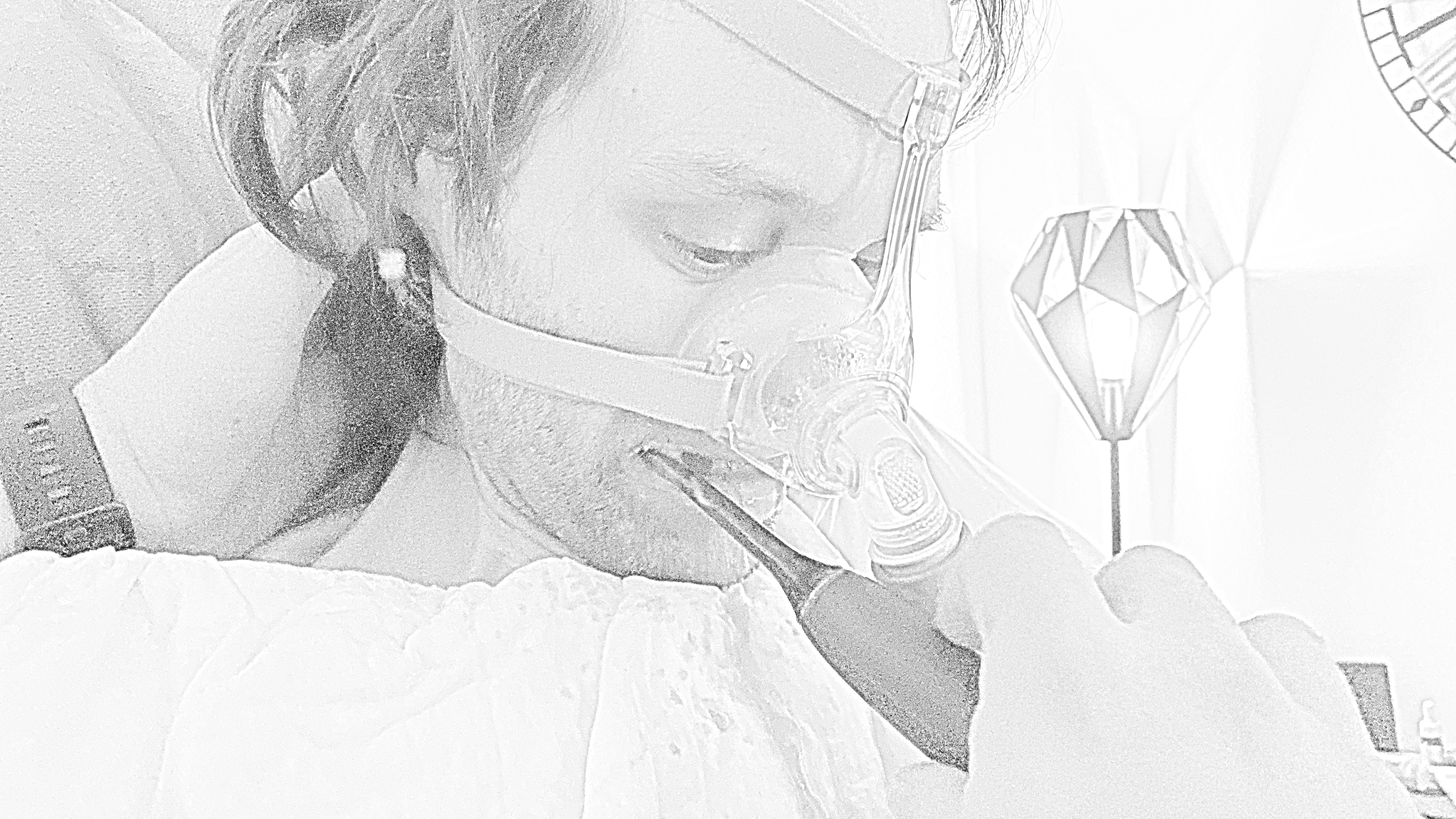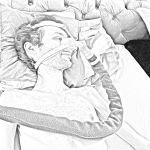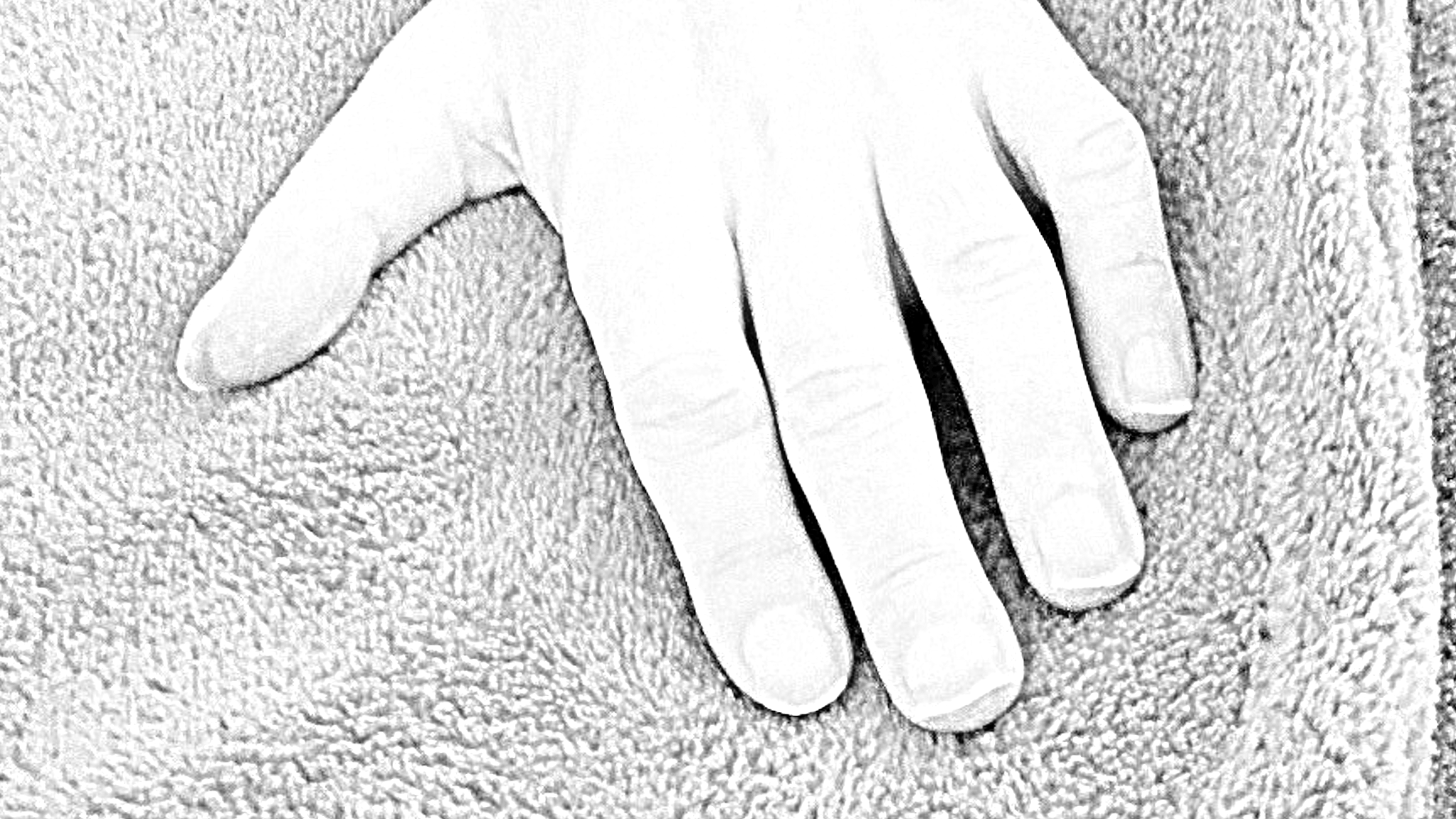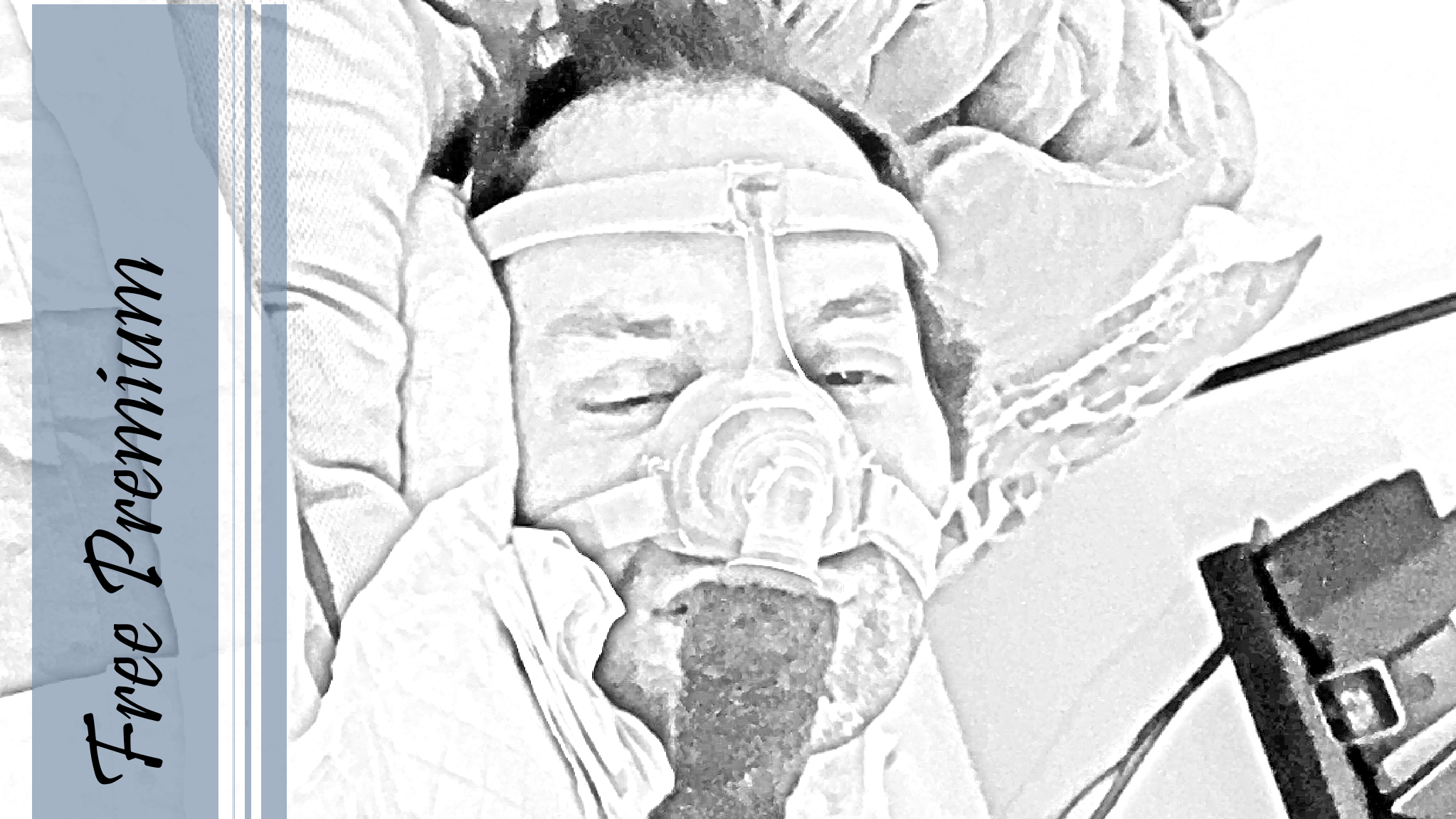If my carers had followed these instructions, they would still be relevant today and I would have been spared a lot of grief:
When it comes to oral care, one thing matters above all: Not wasting time and not scrubbing my gums. If the toothbrush switches off, the maximum recommended brushing time has been exceeded.
![]() We brush teeth, not the towel you put underneath, not the cloths you might have put underneath to protect the towel that was put underneath to protect the T-shirt, which we are about to change anyway and put in the wash. I don't want you to keep vacuuming me to prevent me from drooling on the wet wipes you might have put underneath to protect the towel that is there to protect the T-shirt that we are about to change and put in the wash anyway.
We brush teeth, not the towel you put underneath, not the cloths you might have put underneath to protect the towel that was put underneath to protect the T-shirt, which we are about to change anyway and put in the wash. I don't want you to keep vacuuming me to prevent me from drooling on the wet wipes you might have put underneath to protect the towel that is there to protect the T-shirt that we are about to change and put in the wash anyway.
![]() Ja, my teeth are great and my gums suck. But I've only had this much bleeding gums since I stopped brushing my own teeth and only with 4 out of 5 cleaners. So please spare me the smart-alecky claims like the bleeding is because I have periodontal disease. If it was, some dentist in the past 40 years would have probably diagnosed it. And if I just got periodontal disease, yes, that would be a stupid thing. Because first of all, I who can't move can probably do the least for it and secondly, we would then need a dentist to treat me at home. Be that as it may. My personal tip: hold the toothbrush with only 2 or 3 fingers and then it works. Without a bloodbath.
Ja, my teeth are great and my gums suck. But I've only had this much bleeding gums since I stopped brushing my own teeth and only with 4 out of 5 cleaners. So please spare me the smart-alecky claims like the bleeding is because I have periodontal disease. If it was, some dentist in the past 40 years would have probably diagnosed it. And if I just got periodontal disease, yes, that would be a stupid thing. Because first of all, I who can't move can probably do the least for it and secondly, we would then need a dentist to treat me at home. Be that as it may. My personal tip: hold the toothbrush with only 2 or 3 fingers and then it works. Without a bloodbath.
![]() Brushing my teeth is one of the most exhausting activities for me., because:
Brushing my teeth is one of the most exhausting activities for me., because:
- I have to hold my breath all the time when you clean the inside (mouth wide open means throat airway blocked, as breathing not possible).
- I sit in an awkward position (head overstretched too far back, sucks for my breathing).
- Mega exhausting, my muscles don't last that long (I manage to keep my mouth halfway open for 2-3 minutes, then it's closing time, no matter how far we've got with brushing our teeth).
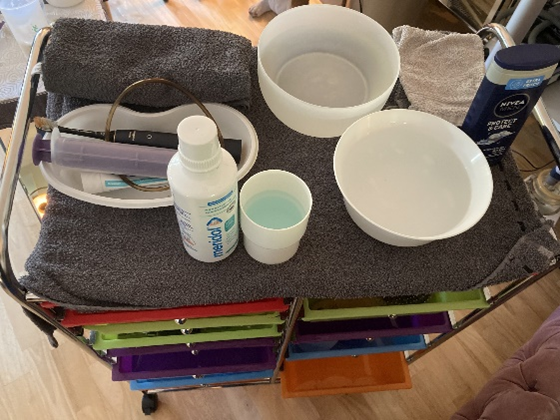
First, please prepare everything we need to brush our teeth. That would be:
- My toothbrush
- Toothpaste
- A cup of water with some mouthwash
- A white (shallow) kidney dish
- One syringe (NIPEG)
- A towel
- A (real) flannel
- A bowl of clear cold water
If we're about to wash our faces, which makes perfect sense, we'll still need..:
- A bowl of lukewarm water
- Shower gel

First you straighten me up and then drive me back a little further until I give you a sign than is usual when eating and drinking. So I lie a little flatter than usual.
![]() The background to this is that I have to fight against the ligaments of the mask that run across my cheeks in order to open my mouth. The steeper I sit, the more strenuous it becomes because of the changing position of the ligaments.
The background to this is that I have to fight against the ligaments of the mask that run across my cheeks in order to open my mouth. The steeper I sit, the more strenuous it becomes because of the changing position of the ligaments.
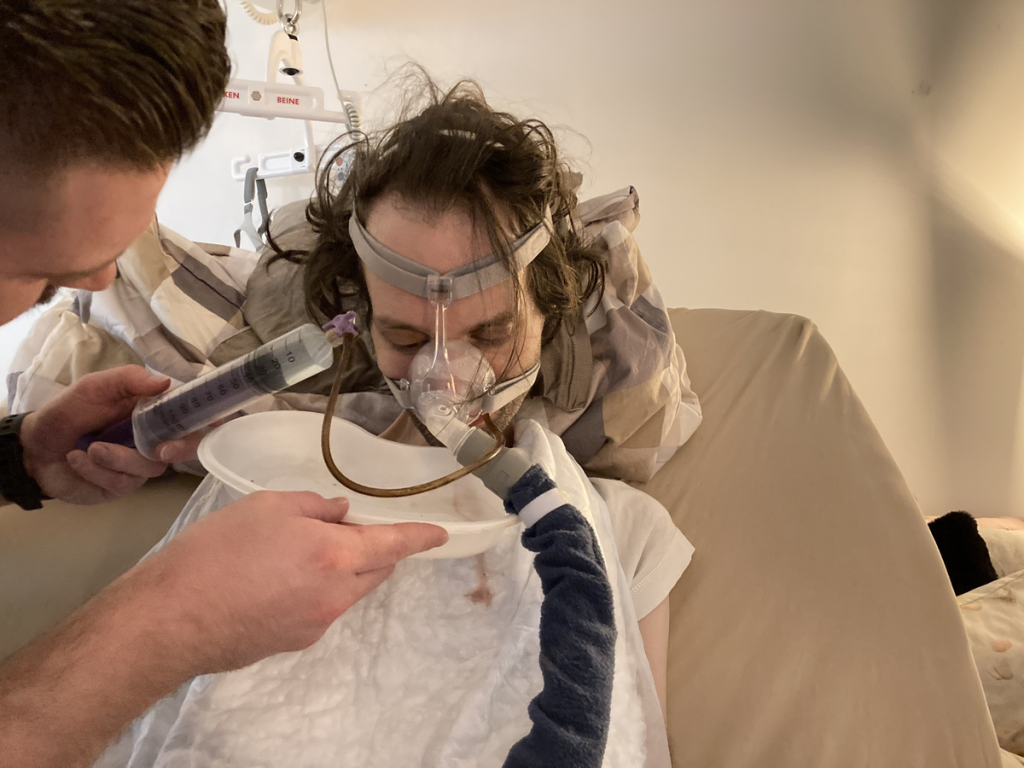
Cover our "work surface" with a large towel. That's enough, even though experience shows that dental care becomes quite a mess.
The first thing I do is rinse my mouth. To do this, you squirt water mixed with mouthwash into my mouth with the syringe, just like when I drink.
Here it can be a little more, 5-7 ml is fine.
![]() If I immediately spit it all out again, you didn't give me too much water, but then the ventilation put a spoke in my wheel. And before the alcoholic mouthwash is forced into my lungs, I'd rather spit it out.
If I immediately spit it all out again, you didn't give me too much water, but then the ventilation put a spoke in my wheel. And before the alcoholic mouthwash is forced into my lungs, I'd rather spit it out.
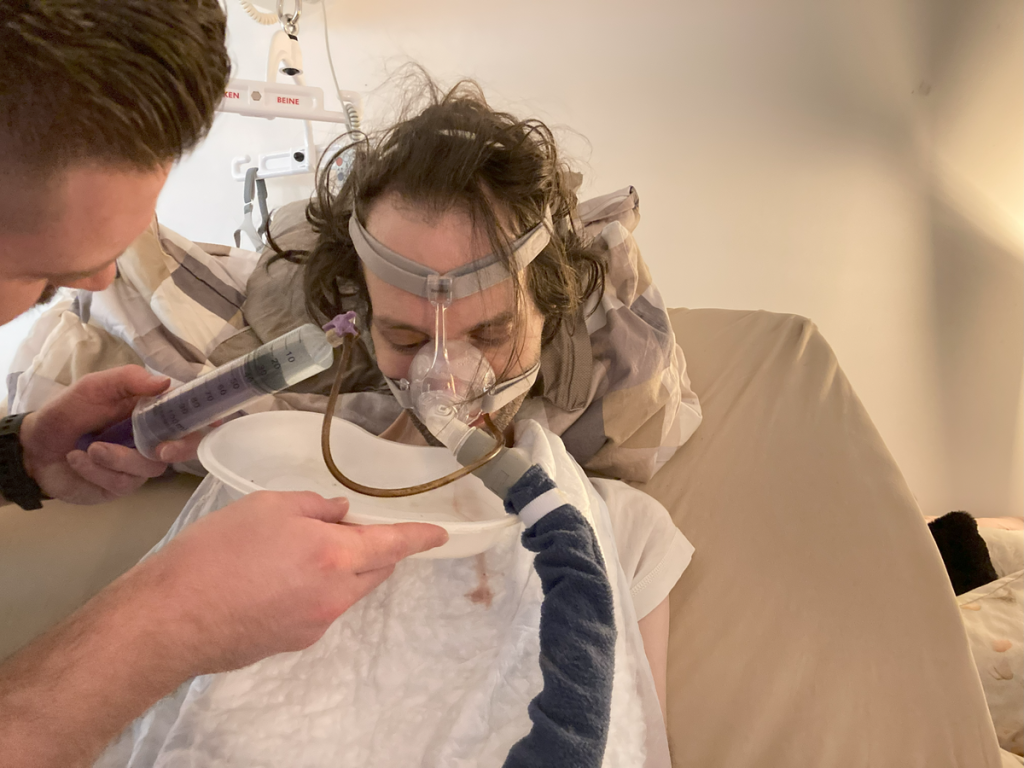
Hold a small (white/grey, not the oversized blue vomit bowl) kidney bowl under my mouth so I can spit out the water.
Remember what I said about the hose and the body. Turn the hose away to the side, as the hose connector says to do, but do not lift the hose up from the nose. That hurts.
Now it's time for the actual brushing. Everyone seems to have their own technique. The manufacturer of my toothbrush says the following:
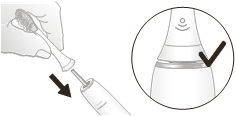
Push the brush head firmly onto the handpiece. Moisten the bristles and apply toothpaste.
A small gap between the brush head and the handpiece is normal. This allows the brush head to vibrate properly.

Place the bristles of the toothbrush on the teeth at an angle of about 45 degrees so that the bristles reach the gum line.
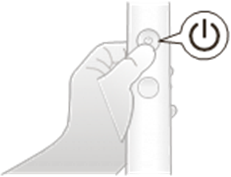
Press the on/off button to switch on the Philips Sonicare.
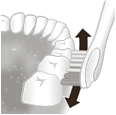
For optimal dental care, brush your teeth only with light pressure and let the Philips Sonicare do the real work. Slowly move the brush head backwards and forwards over the teeth so that the longer bristles reach the spaces between the teeth. Continue in this way until the end of the brushing process.

To clean the inside of the front teeth, tilt the handpiece semi-upright and make several vertical, overlapping brush head movements on each tooth.

